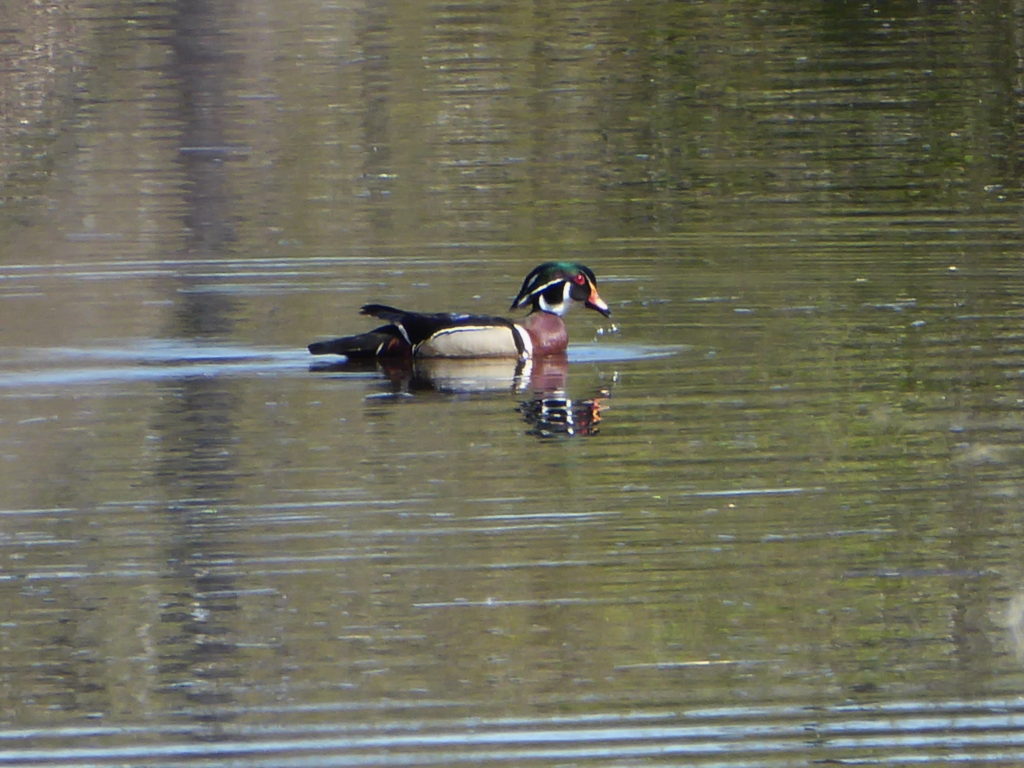Our Most Exotic Duck
Wood Ducks are among our most beautiful birds, with the males being the most colorful, and the females showing a more subtle attractiveness with drab brownish and gray patterns. We are very lucky at Lumberton Leas to have the ideal habitat for our most exotic duck. The Wood Duck male is unmistakable most of the year, with its colorfully patterned head, red eye and long swept back crest. The female does not show the long crest and is overall a dark grayish color with a very distinctive white eye patch. The males are in their most colorful state during the breeding season. Around mid-August they go into what is called an eclipse plumage. At this time they molt or shed feathers making them flightless for a period of time and they look very different, almost female like, from their most colorful stage.
We are at the northernmost range of this duck’s winter territory, but they are much more abundant in the Spring breeding season. They like wooded swampy areas, slow moving rivers and ponds. Our wet bottom lands and small tributaries that flow into the Rancocas Creek meet all their requirements. They are cavity nesters and nest in large tree holes and often make use of nesting boxes put out for them. Their diet is mostly aquatic vegetation and seeds. They are very wary birds and often sense your presence before you see them. When they take off they let out a loud shriek that is very distinctive. The female vocalization is louder and harsher than the male.
There is an Asiatic equivalent of our Wood Duck called the Mandarin Duck. Within the past year a couple of newspaper articles have noted its presence in New York City in Central Park and in an area around Philadelphia. These ducks were most probably escapes.
Photographs and Text by Robert Koch



